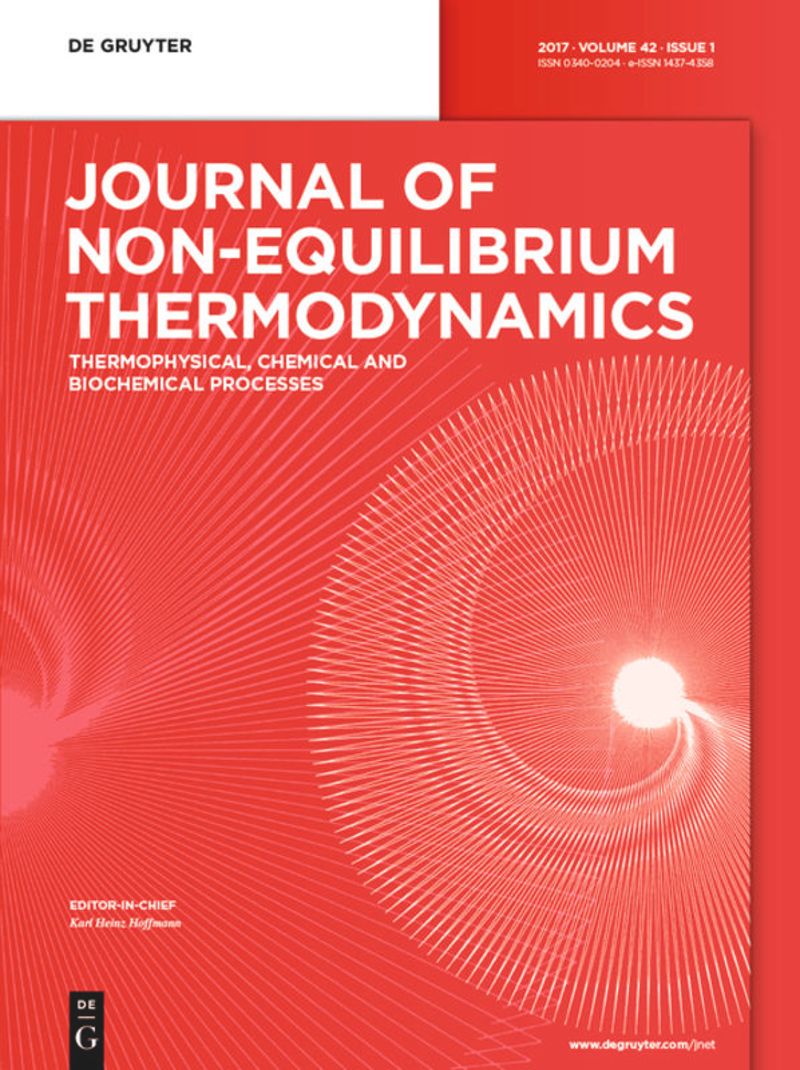Thermal Shear Waves Induced in Mesoscopic Liquids at Low Frequency Mechanical Deformation
IF 4.3
3区 工程技术
Q1 MECHANICS
引用次数: 3
Abstract
Abstract We show that a confined viscous liquid emits a dynamic thermal response upon applying a low frequency (∼1 Hz) shear excitation. Hot and cold thermal waves are observed in situ at atmospheric pressure and room temperature, in a viscous liquid (polypropylene glycol) at various thicknesses ranging from 100 µm up to 340 µm, upon applying a mechanical oscillatory shear strain. The observed thermal effects, synchronous with the mechanical excitation, are inconsistent with a viscous behaviour. It indicates that mesoscopic liquids are able to (partly) convert mechanical shear energy in non-equilibrium thermodynamic states. This effect called thermo-elasticity is well known in solid materials. The observation of a thermal coupling to the mechanical shear deformation reinforces the assumption of elastically correlated liquid molecules. The amplitude of the thermo-elastic waves increases linearly by increasing the shear strain amplitude up to a transition to a non-linear thermal behavior, similar to a transition from an elastic to plastic regime. The thermo-elastic effects do not give rise to any change in stress measurements and thus the dynamic thermal analysis provides unique information about dynamic liquid properties.介观液体低频机械变形诱导的热剪切波
摘要我们表明,在施加低频(~1)时,受限粘性液体会发出动态热响应 Hz)剪切激励。在大气压和室温下,在粘性液体(聚丙二醇)中原位观察到热和冷热浪,其厚度范围为100 µm至340 µm,在施加机械振荡剪切应变时。观察到的与机械激励同步的热效应与粘性行为不一致。这表明介观液体能够(部分)转换非平衡热力学状态下的机械剪切能。这种称为热弹性的效应在固体材料中是众所周知的。对机械剪切变形的热耦合的观察加强了弹性相关液体分子的假设。热弹性波的振幅通过增加剪切应变振幅而线性增加,直到转变为非线性热行为,类似于从弹性状态到塑性状态的转变。热弹性效应不会引起应力测量的任何变化,因此动态热分析提供了关于动态液体性质的独特信息。
本文章由计算机程序翻译,如有差异,请以英文原文为准。
求助全文
约1分钟内获得全文
求助全文
来源期刊
CiteScore
9.10
自引率
18.20%
发文量
31
审稿时长
1 months
期刊介绍:
The Journal of Non-Equilibrium Thermodynamics serves as an international publication organ for new ideas, insights and results on non-equilibrium phenomena in science, engineering and related natural systems. The central aim of the journal is to provide a bridge between science and engineering and to promote scientific exchange on a) newly observed non-equilibrium phenomena, b) analytic or numeric modeling for their interpretation, c) vanguard methods to describe non-equilibrium phenomena.
Contributions should – among others – present novel approaches to analyzing, modeling and optimizing processes of engineering relevance such as transport processes of mass, momentum and energy, separation of fluid phases, reproduction of living cells, or energy conversion. The journal is particularly interested in contributions which add to the basic understanding of non-equilibrium phenomena in science and engineering, with systems of interest ranging from the macro- to the nano-level.
The Journal of Non-Equilibrium Thermodynamics has recently expanded its scope to place new emphasis on theoretical and experimental investigations of non-equilibrium phenomena in thermophysical, chemical, biochemical and abstract model systems of engineering relevance. We are therefore pleased to invite submissions which present newly observed non-equilibrium phenomena, analytic or fuzzy models for their interpretation, or new methods for their description.

 求助内容:
求助内容: 应助结果提醒方式:
应助结果提醒方式:


